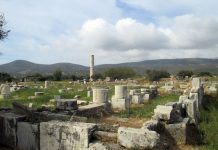The 13th centuryCharles Bridgeis usually thoroughly packed with tourists and Czechs alike especially during the spring and summer months.Charles Bridgesimply ranks the most significant tourist sights of the city and should be first on your list of sights to see. Early morning is the best time for a less crowded walk although a romantic evening walk beneath the impressive lit up views of Prague by night is nice too.
Expect hundreds of souvenir stands as well as an endless variety of street musicians playing their hearts out for your as you stroll across. Don’t get to carried away though by the pleasures because you might just have your pockets picked (actually it is not so bad just be aware of that fact and you’ll be fine). This a famous Charles Bridge crossing theVltavariver in Prague. This ‘solid-land’ connection made Prague important as a trade route between east and west Europe. The bridge was originally called the Stone Bridge or the Prague Bridge but has been the Charles Bridge since 1870.
King Charles IV’s favourite architect and builder Peter Parler, originally built the present-day bridge. The initial idea was to build a functional construction for knight tournaments and for many years the only decoration on the bridge was a simple Crucifix, but later the urge of the Catholics for ornamentation resulted in 30 statues being built (1600 to 1800 AD).
Today most of the statues are copies, as various floods and catastrophes over the centuries have damaged them. There are now 75 statues and perhaps the most interesting – also the oldest – is that of John Nepomuk (no. 8 from the right as you cross towards the castle). The Bridge, which is 516 meters long cointains16 pillars and 3 bridge towers. One of Towers, the Old Town Bridge Tower is considered to be the most beautiful bridge tower in Europe due to its rich sculpture decoration. Thirty sculptures, which decorate the Bridge, date mainly from the baroque period – from the 18th century. The most remarkable is one created by Matyas Braun and E. M. Brokoff.
John Nepomuk was a priest in Prague under Wenceslas IV. Unfortunately for John Nepomuk, Wenceslas was a suspicious man. The priest fatefully received, one day, the confessions of the beautiful queen. Wenceslas, however was convinced she had told the priest about some alleged love affair whereupon he demanded rather unsympathetically to know what the Queen had revealed. The priest being of pious blood did not break his commitment of confidentiality to the beauty in question and consequently was hauled over the bridge to drown in the Vltava. However, all was not lost for shortly a golden halo appeared over the spot in the Vltava where he disappeared as evidence of his martyrdom and hence today the ring of golden stars over his head on the statue. Some meters before the actual statue there is a small crucifix marking the spot of the deceased. Touch the crucifix and your wish will come true!













